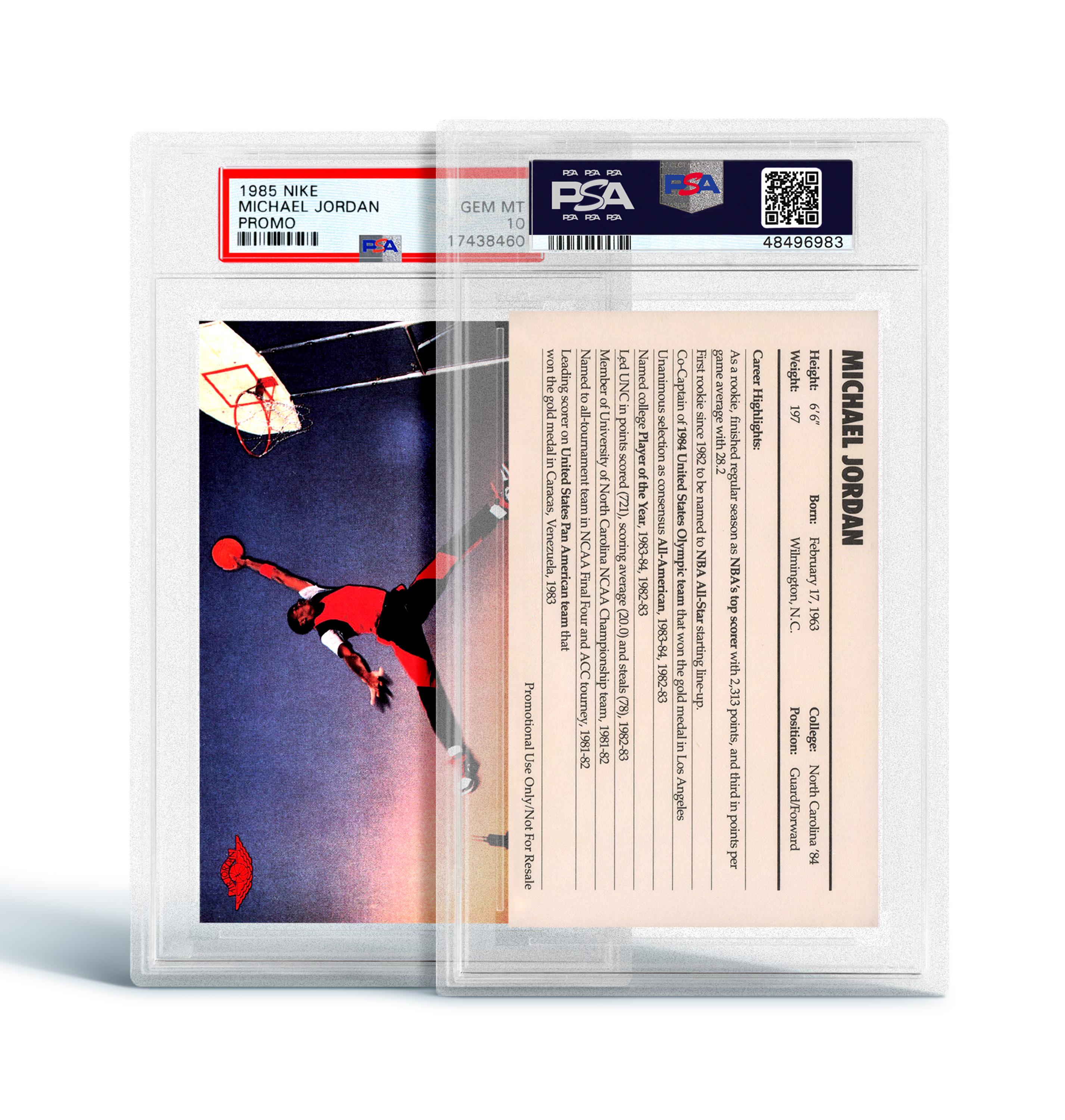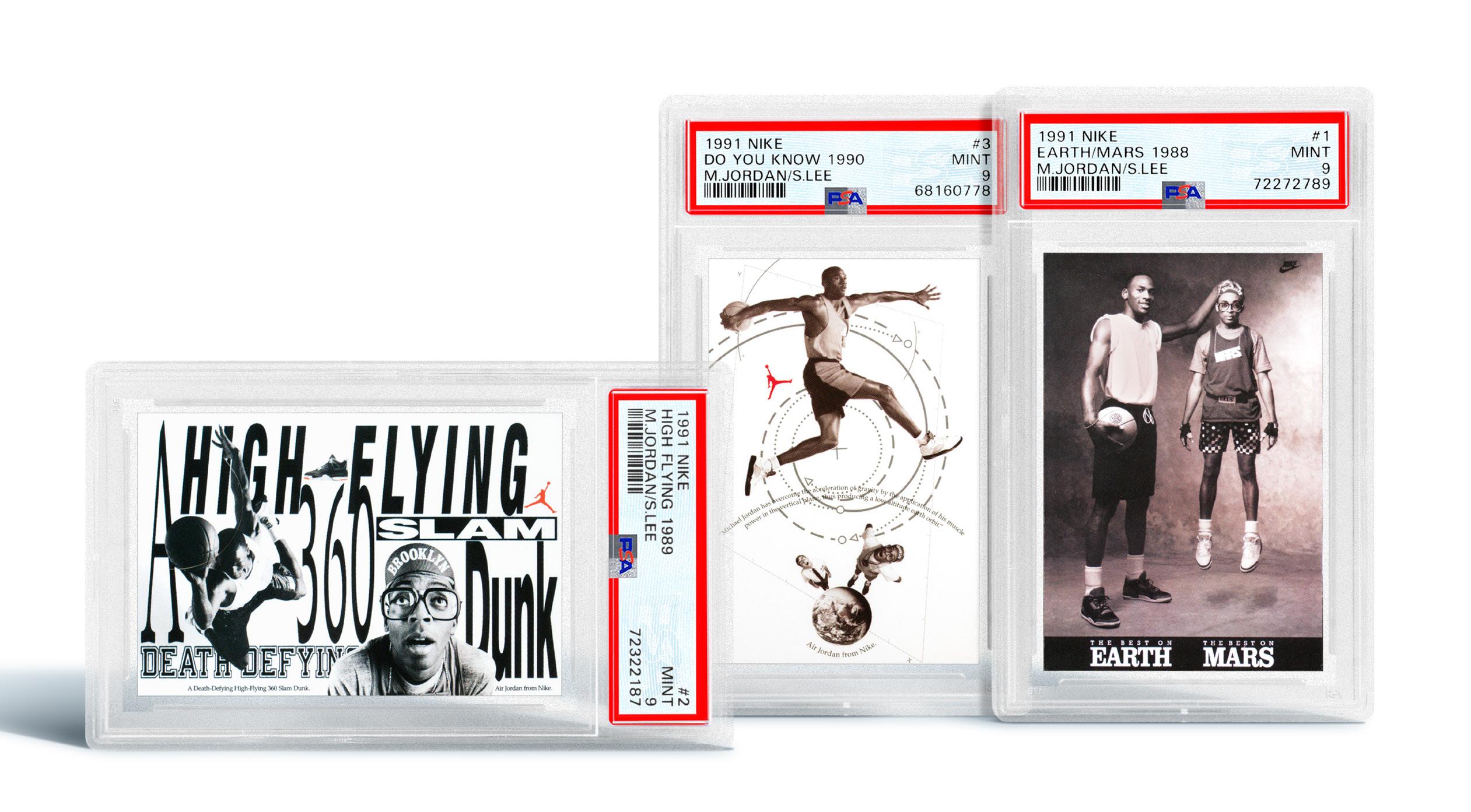
4 minute read
Fast Five
A BRIEF Q&A WITH
WHAT IS YOUR TITLE AND WHAT EXACTLY DO YOU DO AT COLLECTORS?
Advertisement
I am a PSA Autograph Sales Representative. I work with some of the largest autograph dealers across the country to assist them with submitting bulk autograph submissions to our autograph authentication division, as well as attend many of their autograph signings with athletes and celebrities. Whether it be by bulk submission, autograph signing or at a show, my main goal is to expand our PSA Autograph brand, one authentication sticker at a time.
WHAT DO YOU ENJOY MOST ABOUT WORKING AT COLLECTORS?
What I enjoy the most is knowing that I work for a company that truly cares about the hobby and always puts the collector first. When you work with a team like I do where we all have the same mindset, it makes it a joy and a privilege to go to work every day.
WHAT'S YOUR BACKGROUND AS A COLLECTOR?
I started collecting sports cards when I was eight years old. Buying old packs of 1990 NBA Hoops from the ice cream truck will always be fond memories for me. My love and passion for autographs started with my dad when he would take my brothers and I to games or player appearances to score signatures. Sports cards will always be my first love, but autographs — especially Jerry Rice’s — have stolen my heart.

WHAT'S YOUR FAVORITE ITEM IN YOUR ENTIRE PERSONAL COLLECTION?
It is very difficult to say what’s my favorite piece. If I had to pick one, it would be my multi-signed seat back from Candlestick Park. I am a huge 49ers fan so owning a piece of the stadium from one of the greatest NFL franchises to ever exist means a lot to me. Signatures on it include Joe Montana, Jerry Rice, Steve Young, Dwight Clark, Ronnie Lott, Charles Haley, Frank Gore, and a bunch of other 49er legends who played at Candlestick Park.
WHAT WOULD BE THE "GRAIL" COLLECTIBLE THAT YOU HOPE TO OWN ONE DAY?
Jerry Rice is my ALL-TIME favorite athlete so owning anything game-used of his would be amazing. I know Joe Montana just sold his personal collection that included many game-worn items through Goldin but judging by the prices they went for, I'd have to find a steal.

In the lexicon of early Michael Jordan cards, only one skies above the rest.
Jordan's 1984 Star #101 features him almost in the background of his very own rookie card, with teammate Quintin Daily arguably getting better placement. His other '84 Star cards — #195, celebrating his 1984 Olympic Gold Medal, and #288, commemorating his Rookie of the Year honor — are not much more visually appealing, featuring Jordan boxing out for a rebound and looking for an open man to pass the ball, respectively.
Of course, you've got his legendary 1986 Fleer #57, widely considered to be Jordan's true rookie card, not to mention his most expensive rookie, which features him flying through the air, tongue-wagging. To be sure, it is a piece of basketball history. But — and this may be nitpicking here — Jordan's left arm is cut off, as is half the basket, and even the cleanest versions are a bit grainy. And there are his regional cards and oddball cards including his 1985 Interlake Bulls #1 and the 1985 Merchante Campeona Baloncesto Liga sticker, his first mass-produced sticker, albeit in Spain.
Incredible, valuable, collectable.
To be sure, each of these early cards of “His Airness” would be the crown jewel of any collection.
But for those who appreciate the intersection of sports, pop culture, fashion and branding, none is more appealing than Air Jordan’s 1985 Nike #2 promotional card. And now, as the story of the Jordan-Nike partnership heads to the silver screen with Ben Affleck’s Air, the card has never been more interesting.
Oversized — roughly the size of a 3x5 postcard — and distributed in shrinkwrapped packs in a set along with tennis star John McEnroe, electric pitcher Dwight Gooden, prolific wide receiver James Lofton — and Detroit Tigers catcher Lance Parrish? — Jordan’s 1985 Nike promo card has skyrocketed in interest over the last half-decade.
Why?
The aesthetic.
The card features Jordan in his iconic “Jumpman” pose, soaring through the air for a dunk across a purple sky spanning the Chicago skyline. In the top left of the card sits the original Air Jordan logo, wings and all. On the bottom left, the Nike logo. And on the back, Jordan’s measurables and career highlights, a section that was already lengthy less than two years into Jordan’s lasting career.
The impact.
The date Oct. 26, 1984, is a red-letter day in the illustrious history of Michael Jordan. Fresh off leading Team USA to a gold medal at the 1984 Los Angeles Olympics, His Airness entered his rookie season with sky-high expectations. He made his debut on a Friday night in Chicago in front of a crowd of 13,913 against the Washington Bullets. It wasn't his best game, as he finished with 16 points on 5-of-13 shooting with seven assists, six rebounds, four blocks and two steals. Quintin Dailey, who would later join him on his Star rookie card, had 25 points off the bench that day in a 109-93 win.
You can forgive Jordan for not being at his best. He was maybe a little distracted. Earlier that same day, Jordan signed a five-year, $2.5 million deal with Nike, which was three times higher than any other deal in the NBA at the time. Within months of the release of the original Air Jordan 1 shoe, sales exploded. Projecting $3 million in sales, Nike earned more than $125 million off that first shoe, catapulting what could have been a fruitful partnership into the stratosphere.
The value.
Criminally underrated for decades, the card has experienced massive growth in the last three years. Sealed packs of the promo set could be had for under $200 for years, but with the rise of the card market during the COVID-19 pandemic and the release of Netflix’s The Last Dance documentary, Jordan cards were sent through the roof.
PSA 10 examples of the coveted collectible are now well into the low fivefigures, while PSA 9 examples command more than $2,000.

1991 Nike
Michael Jordan/Spike Lee
The character of Mars Blackmon was debuted by legendary filmmaker Spike Lee in his 1986 film She's Gotta Have It, and now collectors feel the same about this mood-setting 1991 set. Released as a six-card set, the design just screams 1991 and highlights the successful commercial collaboration between Nike, Jordan and Lee. More than 3,000 of the six total cards have been graded by PSA, with only 224 PSA 10 designations across the halfdozen cards. Card #5, which also features legendary musician Little Richard as a genie, is among the most popular.


